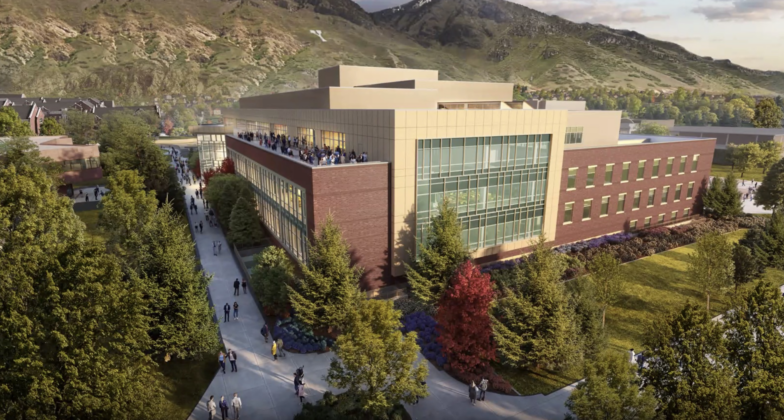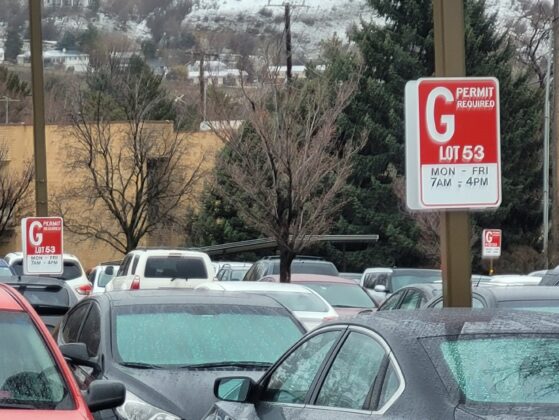As the new music building finished construction, and the Harris Fine Arts Center came crumbling down, students had one question: What about student parking?
Ed Adams, dean of the College of Fine Arts and Communications, said this was one of the first questions students asked him. “Here we have these beautiful new buildings all about student learning, and the first question is, ‘What happens with parking?'”
With the art building’s completion still years away, many students focus on the construction and limitations without considering the potential for additional student learning.
Ongoing concerns
Parking at BYU has been brought up as an issue for students. The parking lots fill with cars early, leaving less room for those that come later in the day. Faculty and students that live outside of Provo leave early in the morning to secure a spot for their vehicles.
Rich Christianson, police lieutenant at BYU, is on the parking committee, a 13-member group comprised of both students and faculty that meets once a month to discuss parking issues on campus. Committee members gather data on parking density and examine which lots are full, what time they are full and why certain lots are full compared to others.
“We’re just here to make sure people park where they should park,” Christianson said.
The parking committee helped change the location of a graduate parking lot from behind the J. Reuben Clark Building to a lot across the street. The parking lot is now used for faculty parking. Thanks to this change, this parking lot is now available after work hours, meaning that guests to the university do not need to park far away from campus.
In spite of these changes, the new constructions have taken away parking from the campus. The new music building is located on a former parking lot, and the construction of the new arts building has closed a second lot from patron and student use. The university is still working on addressing these problems.
“We’ve lost parking, we’ve built a big building over there,” Dean Adams said. “But we’ve thought very carefully about how traffic moves, how parking moves, access egress and ways to better accommodate than we have before.”
Why not add a parking garage for guests?
One solution might appear to solve the problems with parking and space: a terraced parking garage. Parking garages have been around since the early 1900s, originally designed as a place to store cars out of the elements. Now, with advanced weatherproofing in cars, terraced parking garages are used to store cars in a more compacted location than would otherwise be available.
When considering underground parking garages, additional research needs to be done. Not only do architects need to consider structural concerns, but also control for the fumes given off by cars. With the new music building, a parking garage was considered, but ultimately rejected by the university for several reasons.
If BYU had put a parking garage under the new music building, they would have been forced to consider the noises that come from a parking garage, from tires squealing to speed bumps. “We deal with areas where sound is really important,” Dean Adams said. “It just didn’t work well to put parking underneath these buildings.”
Another problem that comes from adding in a parking garage is the fact that these garages are expensive, with prices ranging between $26,000 to $33,000 per stall. That means that for a ten spot parking garage, the university would need to spend more than $260,000. That money had the potential to come out of academic funding. Dean Adams said he did not want to “compromise the educational experience for students to accommodate parking.”
According to Todd Hollingshead, media relations manager at BYU, there are no plans for parking garages to be added to any buildings. Hollingshead said there are three parking garages currently on campus available to faculty and graduate students, one below the Life Sciences Building, one below the Joseph F. Smith Building, and one adjacent to the Tanner building. These lots become available for general use after 4 p.m.
Options currently available
There are other options available for those that do not have cars or do not want to deal with parking. BYU has partnered with the Utah Transit Authority to allow students access to the UTA system until 2027. The website said that the system will include “the Utah Valley Express (UVX) bus, other local and express buses, and a rail network that includes the FrontRunner, TRAX, and S-Line.” This allows students with BYU ID cards free rides to and from campus.
There is also a RYDE shuttle service to help students get from locations around Provo to campus for free. Parking lots, known as “Y Lots,” are available to students who pay $60 per semester for a parking pass. These Y Lots are located around BYU campus, and the RYDE shuttles help bring students from those lots to campus.
While parking is a valid concern that impacts student life, BYU has established many different ways to help students access their education. As the university considers what else can be done to help improve the situation further, students and faculty can rest assured that their parking challenges do have solutions. “The reality is that there’s plenty of parking for everybody,” Christianson said. “You just have to walk sometimes.”







